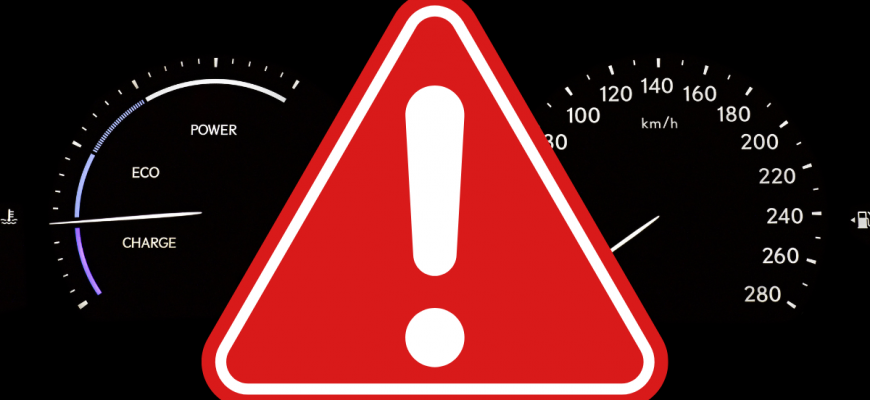The triangle warning light, often with an exclamation mark inside, is a crucial indicator in your vehicle’s dashboard. It’s a general warning signal, meaning something needs your attention.
What it Means
This light doesn’t pinpoint the exact problem. It signals a fault within one of your car’s systems. Possible causes include:
- Low tire pressure
- Engine problems
- Brake system issue
- Electrical fault
- Coolant level low
What to Do
Safety First: Pull over safely as soon as possible.
Consult Your Manual: The owner’s manual will provide a more specific explanation and suggest initial steps.
Check Gauges: Monitor temperature, oil pressure, and other readings.
Seek Professional Help: If unsure, contact a mechanic. Ignoring it can lead to further damage.
The triangle warning light, often with an exclamation mark inside, is a crucial indicator in your vehicle’s dashboard. It’s a general warning signal, meaning something needs your attention.
This light doesn’t pinpoint the exact problem. It signals a fault within one of your car’s systems. Possible causes include:
- Low tire pressure
- Engine problems
- Brake system issue
- Electrical fault
- Coolant level low
Safety First: Pull over safely as soon as possible.
Consult Your Manual: The owner’s manual will provide a more specific explanation and suggest initial steps.
Check Gauges: Monitor temperature, oil pressure, and other readings.
Seek Professional Help: If unsure, contact a mechanic. Ignoring it can lead to further damage.
Specific Scenarios and Troubleshooting
While the general warning light is vague, here are some common scenarios and initial troubleshooting steps you can take after ensuring your safety:
Tire Pressure Monitoring System (TPMS)
If the triangle warning light illuminates along with a tire pressure symbol, it likely indicates low tire pressure in one or more tires.
- Check Tire Pressures: Use a tire pressure gauge to check the pressure in all tires, including the spare if accessible.
- Inflate Tires: Inflate tires to the recommended pressure listed on the sticker inside your driver’s side door or in your owner’s manual.
- Reset TPMS: Some vehicles require a manual reset of the TPMS after inflating the tires. Consult your owner’s manual for instructions.
- Persistent Light: If the light remains on after inflating and resetting, there might be a faulty TPMS sensor. A mechanic can diagnose this.
Brake System Issues
The triangle light, possibly combined with a brake system warning light (often an exclamation point inside a circle), could signal several brake-related problems.
- Check Brake Fluid Level: Low brake fluid is a common cause. Locate the brake fluid reservoir (usually under the hood) and check the fluid level. If it’s low, add the correct type of brake fluid (specified in your owner’s manual).
- Parking Brake: Ensure the parking brake is fully released. Sometimes the light illuminates if the parking brake is even slightly engaged.
- Brake Pad Wear: Severely worn brake pads can sometimes trigger a warning light. This requires professional inspection and replacement.
- Serious Issue: If the brake pedal feels spongy or you experience unusual braking behavior, do NOT drive the vehicle. Have it towed to a mechanic immediately.
Engine Problems
If the triangle light comes on without any other specific engine warning lights (like the check engine light), it could indicate a less critical, but still important, engine-related issue.
- Check Coolant Level: Low coolant can lead to overheating and engine damage. Check the coolant reservoir and add coolant if necessary.
- Check Oil Level: While a low oil level usually triggers a separate warning light, it’s always a good idea to check it.
- Listen for Unusual Noises: Pay attention to any unusual engine noises, such as knocking or hissing. These could indicate a more serious problem.
- If in Doubt, Consult a Mechanic: Engine problems can quickly escalate. It’s best to have a professional diagnose the issue.
When to Seek Immediate Professional Help
In the following situations, do not attempt to diagnose or repair the problem yourself. Seek immediate professional help:
- If the warning light is accompanied by any unusual noises, smells, or smoke.
- If you experience a loss of power, difficulty steering, or any other significant change in vehicle handling.
- If you are unsure about the cause of the warning light or how to address it.
Ignoring a warning light can lead to more extensive and costly repairs down the road. Prioritize safety and seek professional assistance when needed to keep your vehicle running smoothly and reliably.










Clear and easy to understand. Perfect for a quick refresher on car warning lights.
The tip about consulting the owner’s manual is spot on. I always forget to do that!
This is a great reminder of what that pesky light means! Very helpful and concise.
This article is very informative and well-written. I feel much more prepared now.
Good to know about the TPMS connection. I’ve seen that light and now understand why.
Excellent advice about pulling over safely. Safety should always be the priority.
I appreciate the breakdown of possible causes. It gives me a good starting point.
Thanks for the reminder to check gauges! That’s a crucial step I sometimes overlook.